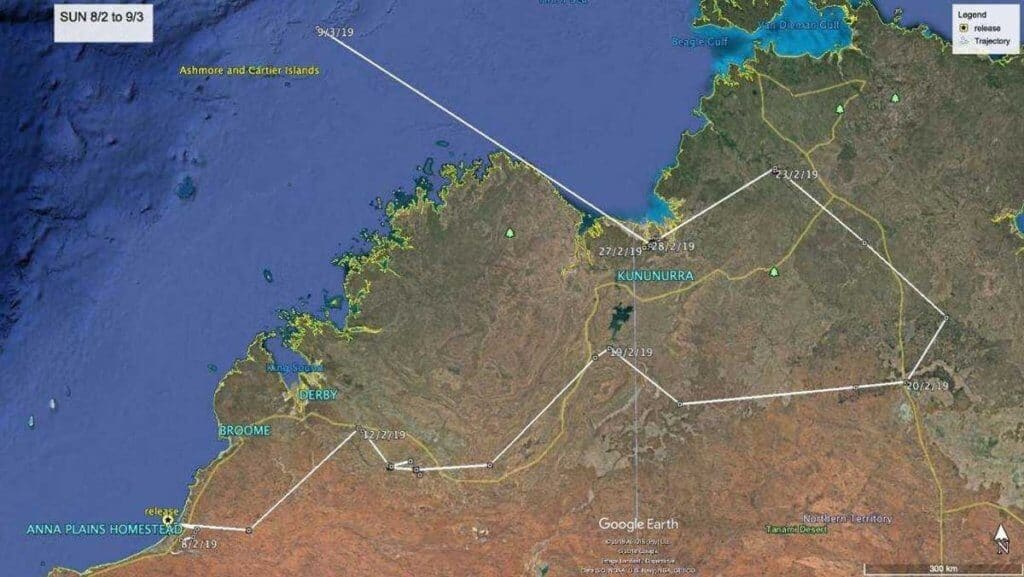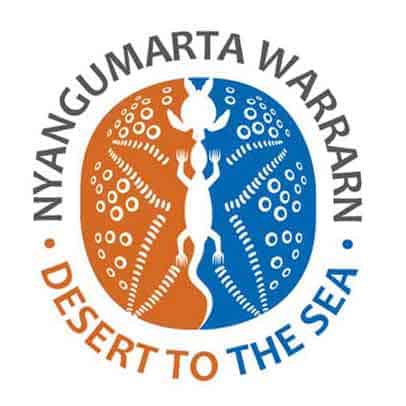An early departure

In this second comprehensive report from the Australasian Wader Studies Group (AWSG), all four Oriental Pratincoles have now left Australia on northward migration (Figure 1.). This is exciting news as it is much earlier than most of the other shorebird species to visit Australia, which depart our shores from late March to mid-April.
The first bird to depart on the 18th February, SHE, has now been in Cambodia for over a week. SHE settled by the largest freshwater lake in Southeast Asia, where it could well stay to breed.
The other three Pratincoles are still on migration through Indonesia and Borneo. All four Oriental Pratincoles left Australia from the north-west.
The birds could very well complete their migration in the next ten days or so. It will be particularly interesting to see where the individual breeding locations are.

Oriental Pratincoles on the move
Our Interstate traveller has left the country
Leg Flag SUN (PTT 83591)
At the time of our first report, SUN was positioned 60km north west of the Legune Airport. SUN reached this location around the 25th February. Legune Station is a 3000km² cattle station, which also contains the Legune Coastal Floodplain; a site of conservation significance (including an important and significant shorebird site), between the Victoria and Keep Rivers in the Northern Territory. SUN remained in this area until 8th March (Figure 2.).

Around the evening of 8th March SUN left this site and commenced migration with the next position being recorded 140km north-east of the Ashmore Islands, travelling approximately 700km between the times of 18:38 on 8 March and 20:12 on 9th March.

From outback explorer to city living (well, almost)
Leg Flag SEP (PTT 83593)
During the last reporting period, SEP spent its time exploring the remote outback of North West Australia. On March 4th or 5th, SEP ended its outback tour. SEP’s next land-based location was in the Pati Regency, Central Java, only 8km east from the city of Pati, this location is 1790km from the release site.


Our first world traveller foraging and roosting on Tonle Sap Lake
Leg Flag SHE (PTT 83595)
SHE remains on the floodplains of Tonle Sap Lake – the largest lake in Southeast Asia and a UNESCO Biosphere reserve – where it has been for 15 days (from the 23rd February – 10th March). Tonle Sap Lake is an important area, not only for the flora and fauna of the region, but also for almost 50% of the Cambodian human population, who depend on the lake’s resources for their livelihoods.
SHE remains approximately 4000km from the release site at the time of this report.


In West Kalimatan - The Province of a Thousand Rivers
SEC (PTT 83596)
After staying ‘close to home’ for just over 2 weeks (February 8th – 25th), SEC began its migration around 26th February via Roebuck Plains, before heading in a more westerly direction towards Borneo.
At the time of the last report, SEC was located in the south-west corner of Borneo, 5km north of Air Hitam Village. By the 3rd March, SEC had flown a further 330km north to the Landak Regency, 45km north east of Pontianak, the capital of the West Kalimatan Province of Borneo.
At the time of this report SEC is located approximately 2500km from the release site.


Download a PDF copy of this report – Oriental Pratincole Satellite Tracking Report Number 2
Acknowledgements
Clive Minton
The extensive and expensive satellite tracking program we have set up in NWA has only been possible through the efforts and generosity of a large number of people and organizations. It is difficult to know where to start with the formal acknowledgements so I will list them – but not in any particular order of priority.
- The members of the AWSG NWA 2019 Wader and Tern Expedition and similar NWA expeditions in previous years, are particularly thanked for their efforts in the field in catching, banding and deploying transmitters on a range of species.
- Landowners are especially thanked for permission to go onto their property to enable us to catch various species in order to deploy the satellite transmitters. In particular we thank Anna Plains Station for giving us the freedom to roam over large areas of grazed grassland when counting and catching target species.
- AWSG acknowledges the Yawuru People via the offices of Nyamba Buru Yawuru Limited for permission to catch birds on the shores of Roebuck Bay, traditional lands of the Yawuru people.
- AWSG acknowledges the Karajarri and Nyangumarta people for permission to catch birds to be marked for this project on the shores of 80 Mile Beach, traditional lands of the Karajarri and Nyangumarta.
- The cost of the satellite transmitters, which cost around $5000 each, and the satellite downloading costs (around $1000-1500 per month) have been met by a variety of sources. Private individuals (Charles Allen and Doris Graham) have made most generous individual contributions. Kate Gorringe-Smith and her team of artists involved in The Overwintering Project made a large, generous donation from funds raised during their various public exhibitions. The annual NWA Expedition members, collectively, also provided significant funds each year.








